Do you hear that rattling noise when your furnace is running? Don’t worry; you’re not alone. In this post, we’ll show you how to fix a rattling furnace. We’ll also share some tips on preventing the problem from happening again. Keep reading for more information.
Your furnace is making a strange noise—it sounds like rattling metal. You’re not sure what’s going on, but you know something isn’t right. What do you do? Throughout this blog post, we’ll walk you through the steps to take if your furnace starts rattling. We’ll also help you decide whether or not it’s time to call a professional technician. So, without further ado, let’s get started.
Summary: If your furnace is rattling, there are a few things you can do to fix the problem. First, check to see if there’s any dirt or debris blocking the fan blades. If so, clean it off with a vacuum cleaner and a bucket. Next, check to see if the fan is working properly. If not, replace it with a new one. Finally, make sure that the furnace is properly installed and connected to the electrical outlet.
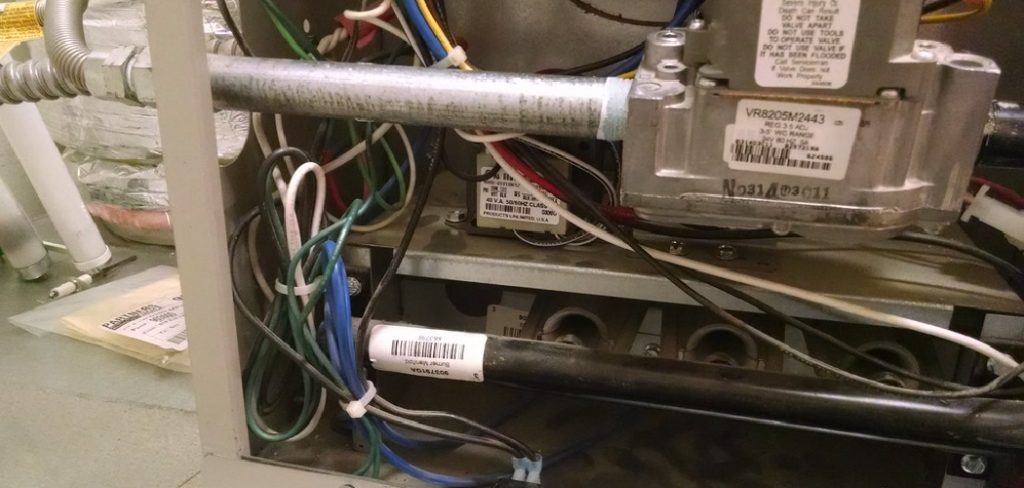
What Causes a Rattling Furnace?
There are many reasons why your furnace may be rattling. Such as:
1. Loose Metal Parts
The metal parts inside your furnace may become loose or vibrate during normal operation. This can cause them to rattle and produce a noise that is often mistaken for a rattling sound. It may also be a good idea to check the fan belt and make sure it is still securely in place.
2. Improper Installation
If your furnace is not installed properly, it might be prone to rattling due to excess vibrations or airflow issues. In order to address this problem, you will need to have your furnace inspected by a professional to determine what is creating the rattling noise and how it can be fixed.
3. Damage to Components
If your furnace has been damaged by wear and tear or due to another problem, such as a clogged air filter, it may start to rattle as well. This is often a sign that something needs to be repaired or replaced in order to restore your furnace to proper functioning.
4. Dust Buildup
Over time, dust and debris can build up in the interior of your furnace, causing parts to stick together or rub against each other. This can also lead to rattling noises, as well as other problems like reduced heating efficiency or increased energy bills.
If you are experiencing a rattling noise from your furnace, the best thing to do is to get it inspected as soon as possible. This will help you determine the cause of the issue and find a solution that will keep your furnace running smoothly and quietly.
How to Fix a Rattling Furnace in 6 Easy Steps
Step 1: Check the Noise Source
The first step in fixing a rattling furnace is to identify the source of the noise. This can typically be done by listening carefully for any sounds that seem out of place or unusual, such as a vibrating noise or a clanking sound.
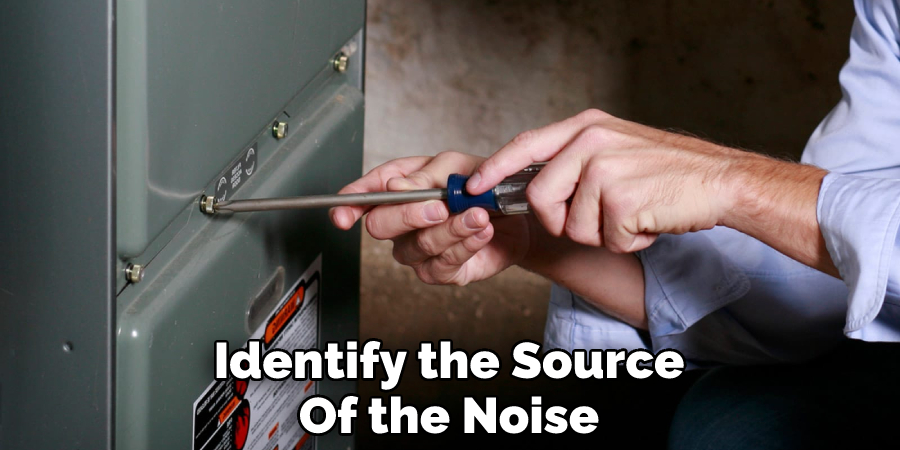
Step 2: Identify How Serious the Problem Is
Once you have located the source of the noise, it is important to determine how serious the problem may be. This can usually be done by examining the severity of the rattling and any other visible signs of damage or wear and tear on your furnace.
Step 3: Check for Obstructions
If you suspect that an obstruction may be causing your furnace to rattle, check for any foreign objects that may be causing vibrations or disrupting the airflow. This could include anything from debris to an animal nest, to a piece of ductwork that has come loose from the furnace itself.
Step 4: Make Adjustments as Necessary
Depending on the nature of the problem with your furnace, you may need to make some adjustments in order to get it working properly again. For example, if there is an obstruction that is blocking the airflow or causing vibrations, you may need to remove this object entirely or reposition it slightly.
Step 5: Clean and Inspect Your Furnace
Another potential cause of a rattling furnace is a build-up of dust or other debris inside the furnace itself. To address this, you should carefully clean and inspect your furnace to make sure that all of its internal components are working properly and free from any obstructions.
Step 6: Check the Furnace’s Blower Assembly
If the noise continues after cleaning and inspecting your furnace, there may be an issue with the blower assembly that is causing your furnace to rattle. In this case, you will need to contact a professional to help troubleshoot and fix the problem.
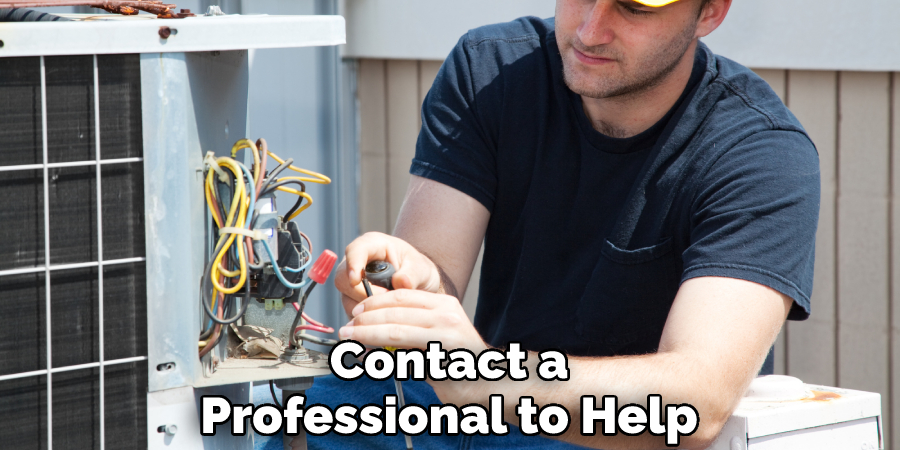
Some Additional Tips to Fix a Rattling Furnace
1. Check for Any Loose or Disconnected
The first thing to do is check for any loose or disconnected parts, such as screws, that may have come loose over time. But make sure you are wearing proper safety gear before you start poking around your furnace, as there may be hot or sharp metal parts that can cause injuries.
2. Check the Fan Belt
If your furnace has a motorized fan, make sure that the fan belt is not broken or worn out. A faulty fan belt can cause your furnace to rattle and shake as it runs, which can be both noisy and disruptive.
3. Check the Fan Blade
If your furnace fan has a motorized blade or impeller, check that it is not damaged or bent out of shape. A damaged fan blade can cause vibration noises when the furnace is running, so replace it if necessary to prevent rattling sounds.
4. Check the Spring Clips
If your furnace has spring clips that connect the fan and motor blades, check to make sure they are not worn out or damaged. A worn-out or broken spring clip can cause a rattling sound when your furnace is running, so replace it as needed to prevent this problem.
5. Check for Loose or Worn-Out Parts
Along with checking the fan belt, blades, and spring clips, take some time to check other parts of your furnace that may be worn out or loose. This can include hoses, gaskets, or any other parts that may be damaged or broken. If you find any worn-out or loose parts, replace or tighten them as needed to fix the rattling noise.
6. Call a Professional
If you are unable to identify or fix the source of the rattling noise, it’s best to call in a professional HVAC technician. They will be able to assess your furnace and quickly identify the root cause of the problem, so they can suggest an effective solution and get your furnace up and running again as soon as possible.
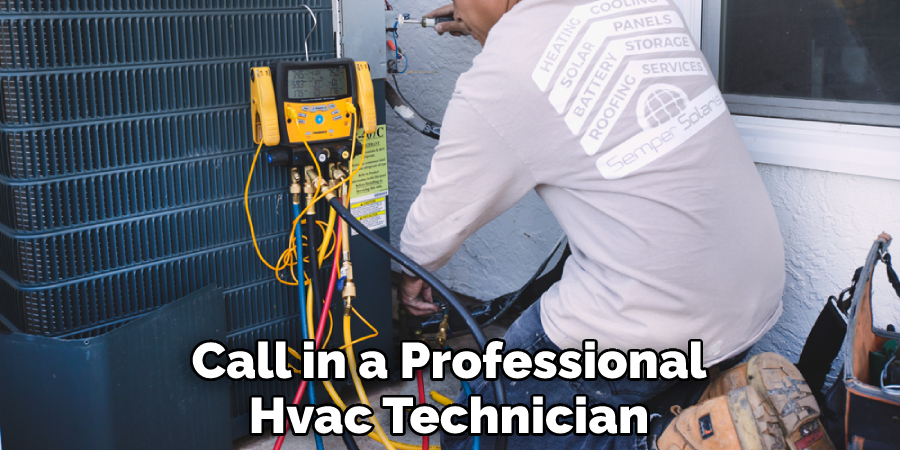
Frequently Asked Questions
Why is My Furnace Making a Loud Vibrating Noise?
If you are experiencing rattling or buzzing sounds coming from your furnace, there could be a number of possible causes. Some common reasons for this type of noise include loose or worn parts within the unit, airflow issues, blockages in the system, or a wiring issue.
What Does It Mean if Your Furnace is Rattling?
There are a number of possible causes for a rattling furnace, ranging from loose or worn parts within the unit to airflow issues, blockages in the system, or wiring issues. If you notice this type of noise coming from your furnace, it is important to have it inspected by a professional right away to diagnose and address any underlying issues.
What is the Average Life of a Furnace?
The average lifespan of a furnace can vary depending on several different factors, including the type and quality of the unit, how well it is maintained over time, and your local climate conditions. That being said, you can typically expect to get anywhere from 10-20 years out of a residential furnace before needing to replace it.
If you are noticing any issues with your furnaces, such as rattling noises or decreased heating performance, it is important to have it inspected and serviced by a qualified technician right away. This will help minimize the risk of costly repairs down the road and ensure that you get the most out of your investment for years to come.
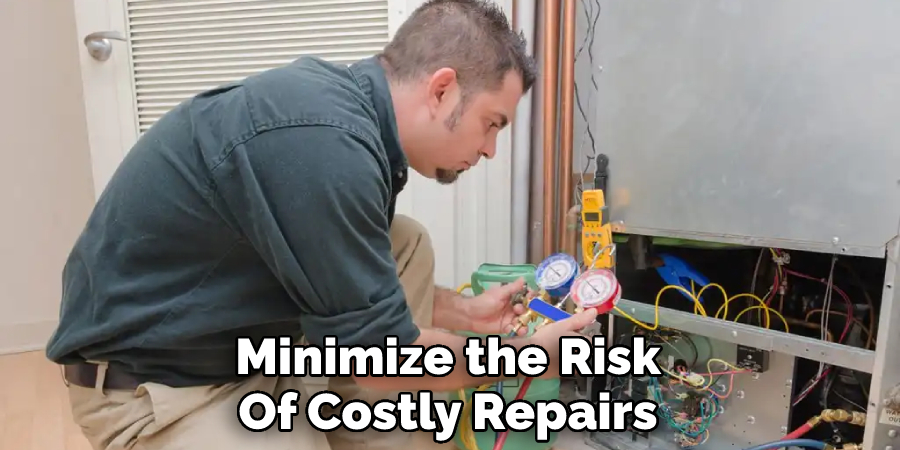
Conclusion
Most people don’t think about their furnace until it starts making noise. rattling can be caused by a few different things, but the most common culprit is loose hardware. Before you call a professional, try these quick and easy fixes. With a little elbow grease, you can get your furnace running quietly again in no time.
If your furnace starts making noises, it’s important to take action right away. By following the steps about how to fix a rattling furnace above, you can troubleshoot the problem and get your furnace back to running smoothly. Don’t ignore rattling noises coming from your furnace – they could be indicative of a bigger issue that needs to be fixed.
